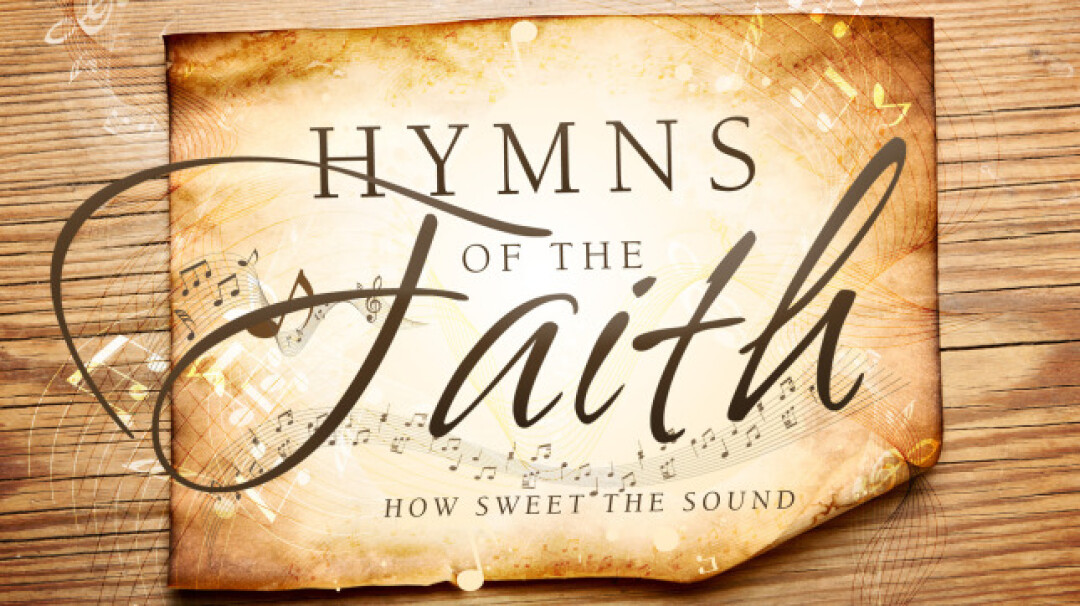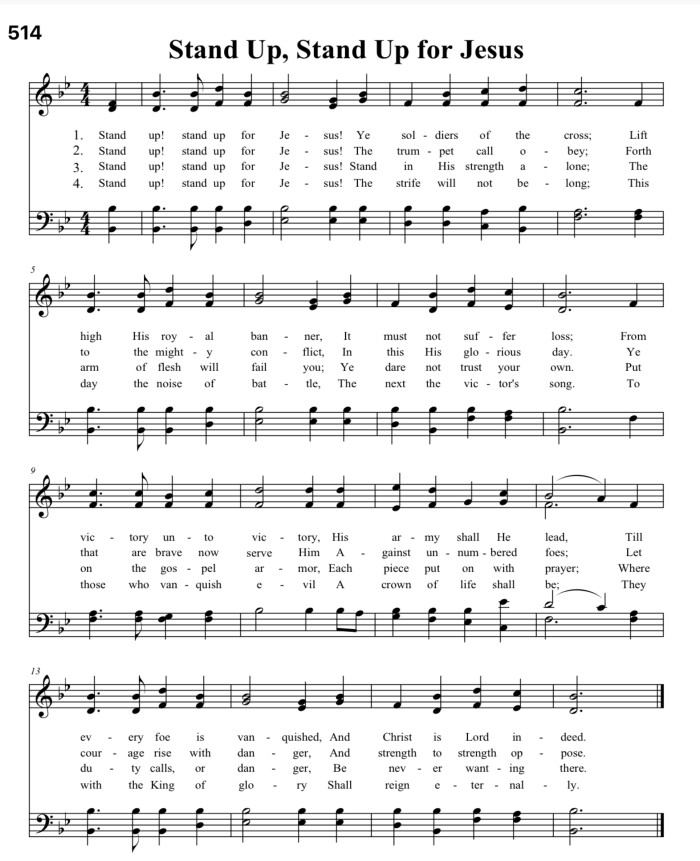

“Stand Up, Stand Up for Jesus” was the closing hymn at Pender's 9:00 am Traditional Service on September 17, 2023 It was sung by Pender's Sanctuary choir, congregation and accompanied on piano by Heidi Jacobs.
"Stand Up, Stand Up for Jesus"
George Duffield, Jr.
UM Hymnal, No. 514
Stand up, stand up for Jesus,
Ye soldiers of the cross;
Lift high his royal banner,
It must not suffer loss.
From victory unto victory
His army shall he lead,
Till every foe is vanquished,
And Christ is Lord indeed.
George Duffield, Jr. (1818-1888) wrote this hymn out of a tragic accident that resulted in the early death of one of the most stirring preachers in the northeastern United States during the mid-nineteeth-century. Dudley Tyng (1825-1858), an inspiring Episcopalian preacher, was one of several ministers participating in a great citywide revival that swept Philadelphia in 1858. His strong doctrinal preaching and his anti-slavery rhetoric were popular for some and angered others, resulting in his resignation from an Episcopal congregation that he pastored following the retirement of his father. In addition to serving the newly organized Church of the Covenant, his midday services at the YMCA attracted crowds as large as 5,000. On one occasion, March 30, 1858, 1000 men responded to the message by committing their lives to Christ.
During this sermon, Tyng is said to have declared, "I would rather that this right arm were amputated at the trunk than that I should come short of my duty to you in delivering God's message." Prophetically and tragically, within a few weeks while visiting the countryside, his arm was caught in the cogs of a corn thrasher and severely lacerated resulting in a great loss of blood and an infection that took his life a few days later. Either in his final sermon or on his deathbed, Tyng is to have said, "Let us stand up for Jesus." Another account states that the dying Tyng told his father, a retired Episcopal minister, "Stand up for Jesus, father, and tell my brethren of the ministry to stand up for Jesus."
Duffield, the son of a well-known Presbyterian minister, was educated at Yale University and Union Theological Seminary. He used his independent wealth, according to the Rev. Carlton Young, "to establish small congregations and to support evangelistic endeavors." Duffield was inspired by the funeral service for Tyng to preach on Ephesians 6:14 in his sermon the following Sunday at Temple Presbyterian Church, the text of which reads, "Stand therefore, having your loins girt about with truth, and having on the breastplate of righteousness." (KJV) The hymn he wrote was sung at the conclusion of the sermon.
An omitted stanza five alludes to Tyng's death in lines 5 and 6:
Stand up!—stand up for Jesus!
Each soldier to his post;
Close up the broken column,
And shout through all the host!
Make good the loss so heavy,
In those that still remain,
And prove to all around you
That death itself is gain!
Hymnologist Kenneth W. Osbeck noted that Duffield's Sunday school superintendent was so impressed by the hymn that he shared it throughout the church's Sunday school classes. From there, the editor of a Baptist periodical received a copy and promoted it his publication, giving it wider circulation and making it available for publication in hymnals to this day.
The inspiring story of this hymn and the countless singers who have responded to the call of Christ over the last 150 years notwithstanding, the rhetoric of the poem presents problems for Christians living in a religiously pluralistic context in the twenty-first century. Images of soldiers who "lift high [Christ's] royal banner," and fight "till every foe is vanquished" recall for many the militant campaigns of the Crusades in the eleventhth through thirteenth centuries. The British counterpart to this hymn is "Onward, Christian Soldiers" (No. 575), written just a few years later in 1864. Many will recall the controversy around the inclusion of this hymn in The United Methodist Hymnal (1989) before its publication. While Ephesians 6 would seem to provide an impetus for both of these hymns, the language employed is so vividly militant that they may be read by those beyond the Christian family as a call to a literal warfare.
Note, by contrast, the language of Charles Wesley's 1749 exposition of Ephesians 6:13-18, "Soldiers of Christ, Arise" (No. 513), a hymn tied closely with the Scripture. At the conclusion of the third stanza, Wesley entreats us to "pray always, pray and never faint,/pray, without ceasing pray." Wesley makes it clearer that we are engaged in spiritual warfare, and Christ provides us with spiritual weapons with which to wage our struggle.
While hymns like "Stand up, stand up for Jesus" may have inspired revival and mission efforts in the mid-nineteenth and early twentieth centuries, our rhetoric today needs to match the gospel of compassion and love that we seek to share in the twenty-first century. Let us claim the call to the spiritual warfare in Ephesians 6 and balance this with the God who came in Christ to love a lost and suffering world.
Adapted from https://www.umcdiscipleship.org/resources/history-of-hymns-stand-up-stand-up-for-jesus


